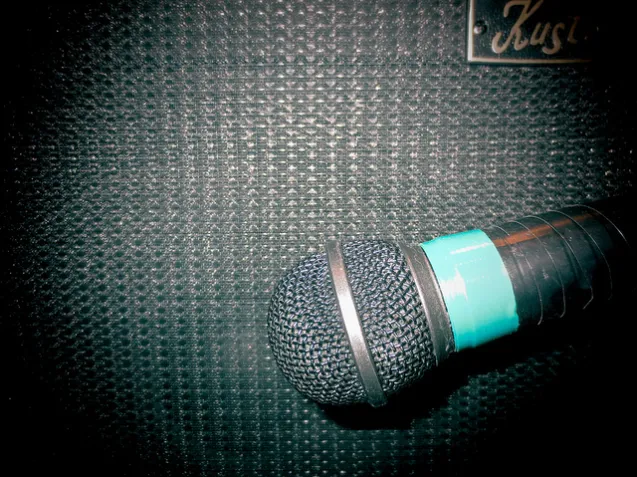Amateur Mic Placement, And How To Avoid It
Feb 07, 2014Here’s how I used to approach mic placement in my home studio when I was getting started: I’d put the mic where I thought it should go, get some signal, and then say “Well it sounds alright to me,” and I’d hit the record button. But the big problem here is that I was doing what so many of us beginners do: we settle.
We put up a mic on our guitar amp and say “Well it sounds like a guitar amp!” and then move on. It wasn’t until further along in my quest for sonic greatness that I stumbled on the simple hack to avoid this complacency and ignorance. And I’d like to share it with you today.

Via Warren Rachele Flickr
The Two Position Rule
When I first began recording I thought mic technique was simple: just put the mic in front of your sound source and hit record. The better the mic and preamp, the better the sound, right? Boy was I wrong. Although not difficult, mic technique is less about the gear you use and more about getting the mic already have in the optimal spot for the desired sound in your head. And as we looked at earlier this week, there are multiple ways to get more out of your current lineup of mics.
In fact, you can quickly arrive at this optimal spot with what I call the two position rule. Simply put, the rule states: never settle with your first microphone position. Instead always adjust the mic to a second, alternate position for comparison. Listen back to both positions (I hope you recorded a little test recording for each position) and make notes about what you like or dislike about them both. Then pick the one that suits you and the song best and move on. Simple as that.
Why This Works
Great recording is all about intentionality. Even happy accidents can be intentional if you leave them in. The point is to arrive at a sound on purpose, because it’s what you like best, not because you settled.
Ideally you’ll put the mics in the best place you can to start, even though that’s hard to do. But even if you did put them in the perfect spot on first position you want to know for SURE that it is perfect. And you do that by way of comparison. By moving the mics slightly and listening to a second position you have new information. Either this second position sounds better or it sounds worse than your first position. Either way is a win for you.
If the second position sounds better (and you can describe why) then you’ve instantly improved your recording before ever hitting the record button all because you took the time to try one more position. Thank goodness you didn’t settle! If, however the second position sounds worse (and you can describe why) then you an switch the mics back to where they were and you’ve instantly improved your recordings by confirming your initial placement, giving you confidence and intentionality for your decision.
This Shouldn’t Take Much Time At All
To all the lazy engineers out there (I’m talking to myself as well), don’t get overwhelmed. This rule is super easy and hardly time consuming. Yes you’re adding a few minutes to your mic setup for each instrument, but it’s a small sacrifice for either better recordings or more confidence and confirmation in your process.
To all the overachieving engineers out there who are bent on discovering the absolute most perfect mic position for each recording, relax. The goal in tracking isn’t to spend tons of time on fine tuning perfection. Rather you want to try a couple of positions out, pick the best of the two, know why, and move on. There’s a reason why I call it the two positions rule and not the ten positions rule. You can easily over think microphone placement. I don’t want you to do that.
Let’s Mature In Our Technique
I don’t think of the word “amateur” as a derogatory term at all. In fact, as a french word it really connotes someone who does something purely for the love of it, rather than as a profession. So it’s a great word to describe many of us. We create music because we love to, not because we get paid to.
However, if our goal is to create the best sounding music we can in our home studios, purely for the enjoyment of it, then let’s mature in our mic technique. This one simple rule can totally change the way your recordings and mixes come out if you simply pull it into your workflow. It’s changed the way I record forever and I know it will help you a lot.
Discover The 6 Steps for Creating a
Radio-Ready Song from Scratch"
Enter Your Email Below To Receive The Free 17-page PDF,
"6 Steps To A Radio-Ready Song"
We hate SPAM. We will never sell your information, for any reason.

